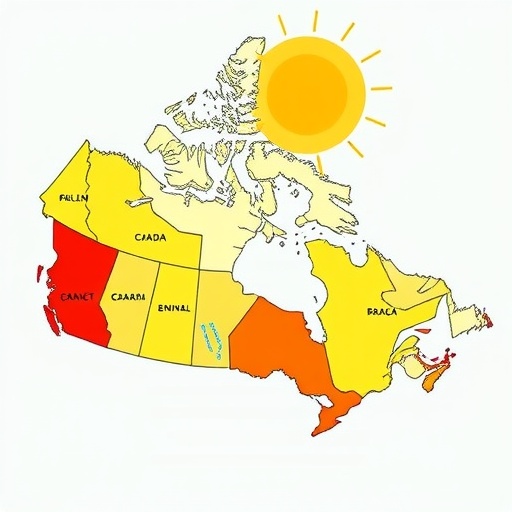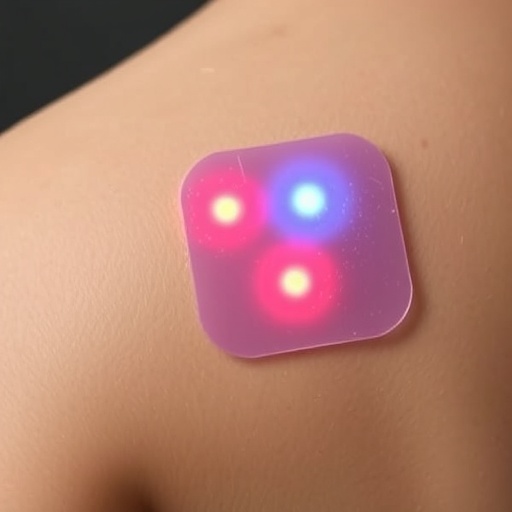
Despite extensive public health campaigns aimed at promoting sun safety, recent research reveals a troubling paradox in Canada: citizens are spending more time exposed to the sun while simultaneously adopting fewer protective measures. This concerning shift in behavior has significant implications for public health, especially in the context of rising melanoma rates across the country. The latest findings come from an expansive study led by McGill University researchers, providing an unprecedented glance into Canadians’ sun exposure habits between 2011 and 2018.
The study analyzed self-reported data from over 77,000 individuals, representing a weighted sample of approximately 21 million Canadians. This considerable sample size lends strong credibility to the study’s conclusions. Remarkably, it found that three quarters of adult Canadians routinely spend at least 30 minutes in the sun on summer days off, with almost half of them enduring two hours or more of sun exposure. Despite this, sunscreen use was largely irregular or absent, underscoring a critical mismatch between sun exposure and protective behavior.
One of the most alarming findings of the study was that about one in three Canadians reported experiencing a sunburn in the past year. Sunburns are a clear clinical indication of excessive ultraviolet (UV) radiation exposure, which is directly linked to increased risk of skin cancers including melanoma, the deadliest form. The persistence of sunburns despite public health education raises questions about the effectiveness of existing campaigns and highlights the need for targeted interventions.
Diving deeper into demographic trends, young adults emerged as the most vulnerable group. Not only were they more likely to get sunburned, but they also reported more frequent use of tanning beds—a known carcinogenic practice—compared to older adults. Furthermore, younger individuals demonstrated lower adherence to other protective behaviors such as wearing protective clothing. These findings shed light on the cultural and behavioral factors driving riskier sun exposure among youth, a group whose long-term health outcomes may be adversely affected.
Dr. Ivan Litvinov, Associate Professor of Dermatology at McGill University and senior author of the study, emphasized the gravity of these trends. He noted that episodic sunburns, especially when incurred during childhood or adolescence, considerably elevate the risk for melanoma later in life. This relationship is well-supported in dermatological research, as UV-induced DNA damage accumulates over a lifetime and can eventually trigger malignant transformations in skin cells.
A multifaceted set of factors appear to be propelling these risky behaviors. Cultural beauty standards that favor tanned skin contribute to preferences for sun exposure and tanning beds despite known risks. A sense of invincibility or low perceived risk among youth exacerbates unsafe sun habits. Additionally, structural barriers such as the cost of effective sun protection products may hinder consistent use, particularly among economically disadvantaged groups.
Melanoma incidence in Canada is on an upward trajectory. The study cites a 17 percent increase in melanoma cases in 2024 compared to the previous year, with an estimated 11,000 new cases diagnosed nationwide. This surge, reflective of broader global trends, amplifies the urgency of addressing sun safety from a public health perspective. Other forms of skin cancer are also reportedly increasing, further emphasizing the need for comprehensive preventive strategies.
This research utilized a cross-sectional, population-based approach to capture a snapshot of sun exposure and skin cancer prevention behaviors across Canada. By drawing on a broad, nationally representative dataset, the study offers valuable insights into behavioral trends over time, which are crucial for informing policy and public awareness campaigns. While self-reported data may have limitations in precision, the large scale of the study helps mitigate individual reporting biases.
The paradox of declining sun safety despite increased awareness mirrors similar challenges faced in other health domains, where knowledge does not always translate into practice. This gap highlights the complexity of behavior change, which is influenced by social, psychological, economic, and environmental factors. Public health experts must therefore rethink current messaging strategies to resonate effectively with diverse Canadian populations, especially younger cohorts.
Technological innovations could complement traditional prevention approaches. For example, wearable UV exposure monitors and personalized digital reminders have the potential to enhance real-time sun safety awareness and behavior. However, equitable access to such technologies remains a concern and must be factored into any comprehensive intervention framework.
In conclusion, the McGill-led study underscores a disconcerting trend in Canada: more prolonged sun exposure coupled with declining sun protection behaviors is driving increased skin cancer risk. This calls for renewed urgency in public health efforts to bridge the gap between knowledge and action. Strategies may include culturally informed messaging, subsidizing sun protection resources, and incorporating emerging technologies to help Canadians better protect themselves against harmful UV radiation.
Continued surveillance and research will be essential for monitoring the effectiveness of these interventions and adapting them over time. Addressing the root causes of risky sun behavior, such as societal beauty norms and financial barriers, will be critical in turning the tide on the rising incidence of melanoma and other skin cancers in Canada.
Subject of Research: Animals
Article Title: Sun safety declining in Canada amid rise in skin cancer cases
News Publication Date: 22-Apr-2025
Web References:
Evaluating UV exposure and skin cancer prevention behaviours in Canada: a national population-based cross-sectional study
The sunscreen paradox: McGill University researchers warn of ‘false sense of security’
Melanoma Canada stats and facts
References:
Moustaqim-Barrette, A., Litvinov, I., et al. “Evaluating UV exposure and skin cancer prevention behaviours in Canada: a national population-based cross-sectional study,” BMJ Public Health, 2025. DOI: 10.1136/bmjph-2024-001983
Keywords: Cancer, Skin cancer, Melanoma, UV exposure, Sun protection, Public health, Behavioral study
Tags: Canadians sun protection behaviorsdeclining sun safety practicesexcessive sun exposure effectshealth implications of sun safety neglectMcGill University study findingsmelanoma incidence increasepublic health campaignsskin cancer rates in Canadasun exposure habits researchsunburn prevalence in Canadasunscreen usage statisticsUV radiation health risks





